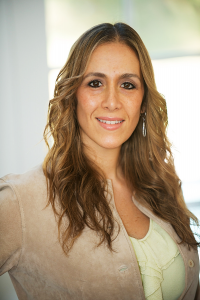By Michelle P Maidenberg, PhD
Wouldn’t it be nice if making decisions were as easy as deciding what fruit we want to eat on a given day? Most decisions that we make aren’t black and white and leave us with strong, powerful and at times uncomfortable emotions.
We are all constantly making important decisions. Patients I work with make decisions about whether to file for divorce, what colleges to apply to, and whether or not to leave or stay at their current jobs. As a working mother, I am constantly making decisions that leave me with deeply negative and often disappointed and regretful feelings.
The hardest decision that I ever remember making was the decision to break off my engagement to a person I was deeply in love with and dated for six years. My heart was pulling me in many different directions and all my opposing thoughts could be rationalized. I was left with wondering why I wanted to break off a relationship with someone I loved, cared about and wanted to be with.
My core values of family, loyalty, love, compassion, security/reliability, perseverance were directly in opposition with my other core values surrounding self-preservation, personal growth, self-respect/integrity, consistency, responsibility, ambition and education. I expected that in order to make the ‘right’ decision I needed to feel fully confident in the position I was choosing to take and that all my feelings needed to be aligned with that position. I learned that making the decision was not contingent upon whether or not I was feeling ‘okay’ with it.
I had the responsibility to fully evaluate my alternative choices and thoughtfully decide that under my set of circumstances, I was making the best decision for me and which would inevitably allow me to be my best me. I had no choice but to confront the array of lingering feelings that was naturally associated with loss and transition. It was pain that I was fully expecting and chose to take on, for the betterment of my future and who I chose to evolve into.
Most individuals of varied age groups that I work with report that it is often difficult for them to make decisions because they have to give up a degree of control (an attribute of our humanness), are in fear of making a poor decision and being deemed or reinforced that they are a failure (there are failed decisions, not failed individuals), and are stressed because of the thinking that the decision will have negative rippling/residual effects that they will not be able to reconcile (most often it is not the case even though our mind catastrophizes and convinces us it is).
There is good reason for concern and discomfort. There are rarely decisions made that are without residual feelings of uncertainty, guilt and regret. Challenging decisions generally come up because there are two core values underlining the decisions that are in opposition with one another. The responsibility lies in our identifying values, effectively problem solving and balancing out the emotional and intellectual variables.
When challenging decision making comes up, consider:
- That rather than thinking about it dichotomously or as a right or wrong decision, consider what the ‘best’ decision is under the circumstances. Thinking about it in absolutes evokes fear and anxiety. Most people prolong making a decision or experience decision making as dreaded because they fear the ‘devastating’ consequences attached to a ‘wrong’, ‘failed’ and ‘bad’ decision. All decisions have a redeeming value and could be an impetus for learning, growing and reconsideration. Few if any decisions lead to dire consequences even though our mind tells us to believe it is so.
- Break down the decision by the core values that are operating for you so that you can see why that position is so meaningful to you. You can use this while helping someone else to work through a challenge or as a parent you can use this with your children to teach them to effectively problem solve and identify the values that will drive their behaviors. This is a valuable lesson to obtain early in life.
- There is pain and discomfort in values and values in pain and discomfort. Your values are your guiding principles and represent who you are and what is meaningful to you. They guide your actions. There are deep emotions attached to these values and when you feel that they are being compromised you are bound to be uncomfortable.
Ask yourself, would you truly want to be ‘okay’ when these get challenged (e.g. if you see someone cutting a line that you have been waiting on, you become enraged because it rubs against your value of fairness and justice, of course you wouldn’t want to be okay with their unjust behavior, but you also have the choice whether to physically accost the person because of their behavior or assertively and respectfully ask them to move to the end of the line).
- Thoughtfully problem solve and balance out both the emotional and intellectual variables. Some of us are more emotionally driven and some of us more intellectually driven. Make an effort to counterbalance in the direction you tend to be less drawn to.
- Make attempts to expand the way you look at things and ask yourself, ‘What else can I consider?’ or ‘Is there anything else here that I’m not fully considering?’ We sometimes get stuck on our own values and principles without considering those of others. We often need to make an effort to be open and expansive.
- In order to fully process your decision and problem solve, consider trying this exercise. Draw a square with four quadrants. List what the advantages and disadvantages are for each of the quadrants. Go quadrant by quadrant starting from left to right first concentrating on the top and then make your way to the bottom. After all four are complete, stipulate on a scale from 1-5 how important each item on each quadrant is for you.
Add up the numbers on the diagonal quadrants (e.g. advantages of changing jobs and disadvantages of changing jobs versus advantages of not changing jobs and disadvantages of not changing jobs). Compare the two sets of numbers and discuss which was greater. If the numbers are close think about why you are so split. For both positions, contemplate whether values would be able to be maintained if you remained in that situation. Also, go back to considering which values are more prominent in this circumstance and what decision will allow you to be your best you.
Traditional problem solving methods include defining the decision, analyzing it, developing alternatives, selecting the best solution, implementing the solution, analyzing the results and learning from them. With identifying your core values and processing and problem solving them, you can make the “best” decisions but it may not be free of emotional discomfort. Making decisions can be challenging without the residual struggle and dread attached to it.
It’s been 21 years since I made the decision of which I spoke about. There is still emotion attached to it. No regret, but contemplation and a bit of nostalgic sadness. I learned so much from that experience and appreciate that I had the opportunity to “fail.” I have gained a clearer understanding of what my values are with the awareness that they may evolve and change overtime. It has lead me in the direction of where I had wanted to go and who I became.
We will all continue to be put in situations where we have to make challenging and important decisions. We should choose to celebrate it as an opportunity to learn, grow and evolve into the person we aspire to become.

About the Author: Michelle P. Maidenberg, PhD
Michelle P. Maidenberg, Ph.D., MPH, LCSW-R, CGP is the President/Clinical Director of Westchester Group Works, a Center for Group Therapy in Harrison, NY. She also maintains a private practice. She is the Co-Founder and Clinical Director of “Thru My Eyes” a nonprofit 501c3 organization that offers free clinically-guided videotaping to chronically medically ill individuals who want to leave video legacies for their children and loved ones.
Dr. Maidenberg is Adjunct Faculty at New York University (NYU). She created and coordinates the Cognitive-Behavioral Therapy Program at Camp Shane, a health & weight management camp for children and teens in NY, AZ, GA, CA & TX and Shane Resorts, a resort focusing on health & weight management for young adults and adults in NY & TX. She is author of “Free Your Child From Overeating” 53 Strategies For Lifelong Change Using Cognitive-Behavioral Therapy, Acceptance and Commitment Therapy & Mindfulness which is forthcoming in Spring 2016.
You can find Michelle via her websites,www.MichelleMaidenberg.com or www.WestchesterGroupWorks.com, and follow her on Facebook or Twitter.


Leave a Reply